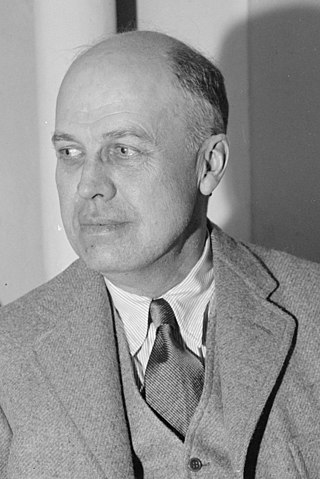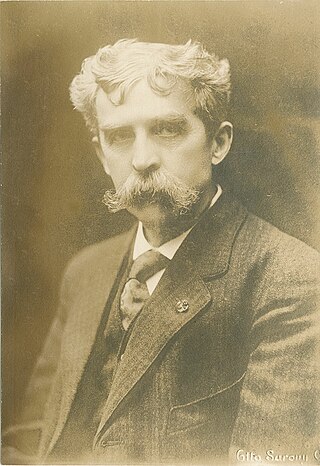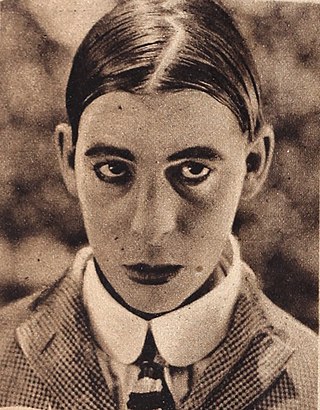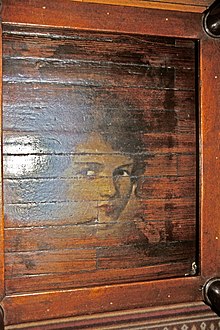
Cripple Creek is a statutory city that is the county seat of Teller County, Colorado, United States. The city population was 1,155 at the 2020 United States Census. Cripple Creek is a former gold mining camp located 20 miles (32 km) southwest of Colorado Springs near the base of Pikes Peak. The Cripple Creek Historic District, which received National Historic Landmark status in 1961, includes part or all of the city and the surrounding area. The city is now a part of the Colorado Springs, CO Metropolitan Statistical Area and the Front Range Urban Corridor.

Central City is a home rule municipality located in Gilpin and Clear Creek counties, Colorado, United States. Central City is the county seat and the most populous municipality of Gilpin County. The city population was 779, all in Gilpin County, at the 2020 United States census. The city is a historic mining settlement founded in 1859 during the Pike's Peak Gold Rush and came to be known as the "Richest Square Mile on Earth". Central City and the adjacent city of Black Hawk form the federally designated Central City/Black Hawk Historic District. The city is now a part of the Denver–Aurora–Lakewood, CO Metropolitan Statistical Area and the Front Range Urban Corridor.

Edward Hopper was an American realist painter and printmaker. He is one of America's most renowned artists and known for his skill in capturing American life and landscapes through his art.
Surrealism in art, poetry, and literature uses numerous techniques and games to provide inspiration. Many of these are said to free imagination by producing a creative process free of conscious control. The importance of the unconscious as a source of inspiration is central to the nature of surrealism.

Hugh Antoine d'Arcy was a French-born poet and writer and a pioneer executive in the American motion picture industry. He is known for his 1887 poem, "The Face upon the Barroom Floor", a sorrowful tale of a painter who takes to drink after his lover deserts him for the fair-haired lad in one of his portraits.
Events from the year 1936 in art.

Central City Opera is the fifth-oldest opera company in the United States, founded in 1932 by Julie Penrose and Anne Evans. Each festival is presented in the 550-seat historic Central City Opera House built in 1878 in the gold mining era town of Central City, Colorado. Pelham G. Pearce was selected in 1996 as Managing Director for Central City Opera, and he was named General/Artistic Director in May 1998, when John Moriarty became Artistic Director Emeritus. Since 2006 John Baril is the first Music director of the opera.
The Face on the Barroom Floor may refer to:
"The Face upon the Barroom Floor", aka "The Face on the Floor" and "The Face on the Barroom Floor", is a poem originally written by the poet John Henry Titus in 1872. A later version was adapted from the Titus poem by Hugh Antoine d'Arcy in 1887 and first published in the New York Dispatch.

Henry Mollicone was an American composer and musical instructor. He died on May 12, 2022, following a lengthy illness. At the time of his death, his home was in Saratoga, California.

Don Barclay was an American actor, artist and caricaturist whose many roles spanned the period from the Keystone Cops in 1915 to Mary Poppins in 1964 and whose many paintings and caricatures of celebrities filled establishments worldwide and are archived in the Library of Congress.
The Face on the Bar-Room Floor is a 1923 American drama film directed by John Ford. It is considered to be a lost film. The film was adapted from the poem of the same name by Hugh Antoine d'Arcy.

Teller House is a historic hotel in Central City, Colorado. Built in 1872, the building now serves as a restaurant.

Floyd MacMillan Davis was an American painter and illustrator known for his work in advertising and illustration; Walter and Roger Reed described him as "someone who could capture the rich, beautiful people of the 1920s: dashing, mustachioed men; the cool, svelte women. But Davis was just as capable at capturing just-plain-folk, and with a cartoonist's sensibilities and a fresh humor, he expanded into story art and ad work that called characters of every persuasion.

The Wheeler Opera House is located at the corner of East Hyman Avenue and South Mill Street in Aspen, Colorado, United States. It is a stone building erected during the 1890s, from a design by Willoughby J. Edbrooke that blends elements of the Romanesque Revival and Italianate architectural styles. In 1972 it became the first property in the city to be listed on the National Register of Historic Places, and the second in Pitkin County. The upstairs auditorium hosts a number of events every year, ranging from nationally prominent music and comedy acts and some of the Aspen Music Festival's events to productions by local community groups.

The Collins Block is a historic commercial building located at 204 South Mill Street in Aspen, Colorado. It is a brick and stone structure erected in the early 1890s.

The Hotel Jerome is located on East Main Street in Aspen, Colorado, United States. It is a brick structure built in the 1880s that is often described as one of the city's major landmarks, its "crown jewel". In 1986 it was listed on the National Register of Historic Places. It is operated by Auberge Resorts.
Herndon Davis (1901–1962) was an American artist, journalist, illustrator, and painter. He worked at the National War College in Washington, D.C., creating maps of China and Japan. Davis was an illustrator for New York, Washington, D.C., and Denver newspapers. He was also commissioned to make paintings and murals.

The Portrait of Sir David Webster is a 1971 portrait by the English artist David Hockney of the arts administrator David Webster. It was commissioned to mark Webster's retirement as the General Administrator of the Royal Opera House in London. The portrait hung for several decades in the opera house.
Julia (Julie) Villiers Lewis McMillan Penrose (1870–1956) was a wealthy American philanthropist born to a prominent family, the wife of the James (Jim) McMillan until he died in 1902, then the wife of millionaire Spencer Penrose until his death in 1939. Julie's giving during her marriages, contributions to the region around her, and the state of Colorado, continued even after death with the creation of the perpetual El Pomar Foundation.











